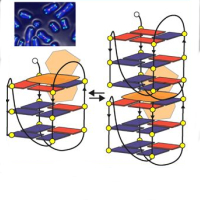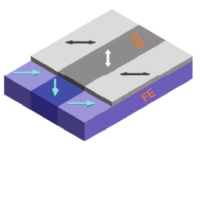About us
The Institute of Materials (IOM, Istituto Officina dei Materiali) of the Italian National Research Council (CNR, Consiglio Nazionale delle Ricerche) pursues the objective of studying and developing innovative materials and devices at the micro- and nano-scale.
IOM can rely on a complete set of tools and methodologies to complete procedures of theoretical modelling, atom-by-atom synthesis, fine analysis, materials and device functionalization, and to face new multidisciplinary scientific issues and to develop additional technologies.
A report about our activities can be downloaded here. For more and updated info or details, feel free to browse our site.
The capability to focus on particularly relevant questions in many fields, such as hybrid materials (inorganic, organic, biologic), superconductivity, spintronics, energy conversion, sub-microscopic energy transportation and storage, DNA or proteins properties, makes the Institute a powerful knowledge generator and external project attractor, but also requires a challenging multi-sector study of physical, chemical and biological phenomena.
Within the context of national and international initiatives, such as Open-Lab and NFFA (Nanoscience Foundries and Fine Analysis), IOM headquarters being located inside AREA Science Park has given greater relevance and strength in promoting a closer involvement of the industrial sector in research and innovation at European level. The afore-mentioned initiatives aim at fostering shared use of premises and laboratories located in the vicinity of major research facilities and infrastructures by scientific research groups and industrial development actors.
The IOM is in charge of managing a great share of the CNR activities operating in the context of Italian and European large scale research infrastructures in the field of matter characterization. The Institute operates six beamlines at the Elettra laboratory as well as two beamlines at the ILL neutron source, and an X-ray beamline at the ESRF synchrotron, inside the scientific hub of Grenoble, France. Available beam time, which can be used by international research groups, is assigned following the review of international committees that select the most scientifically relevant proposals.
The Institute relies also on electronic microscopy and scanning probe microscopy laboratories to expand the range of available experimental techniques for materials and nanostructure analysis. Besides fine analysis of Matter, IOM activities include new materials synthesis based on growth technologies via atomic beam deposition, including extremely high-purity deposition, and the manufacturing of devices based on nano- and micro-structuring through lithography (both electronic and X-ray, from a synchrotron beam, the latter being almost unique at European level).
Apart from its experimental activities, the IOM carries out atomic-level numerical modelling applied to materials, biologic systems and physics of highly correlated systems. Research activities are combined to a strong commitment to the development of new computational methodologies to be used by an enlarged international scientific community. Moreover, the Institute played a noticeable role in developing, disseminating and promoting training associated to the Quantum ESPRESSO project, a high-level software platform for the simulation of materials first-principles and nanoscale modelling.








